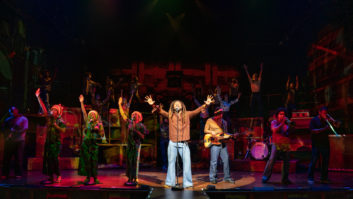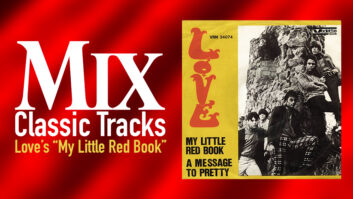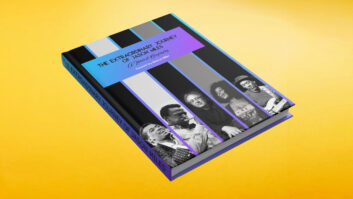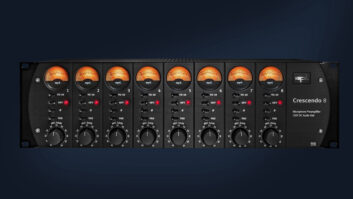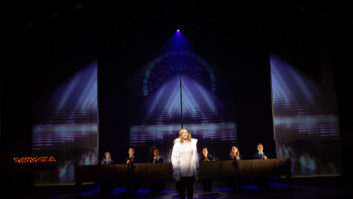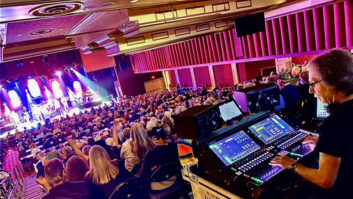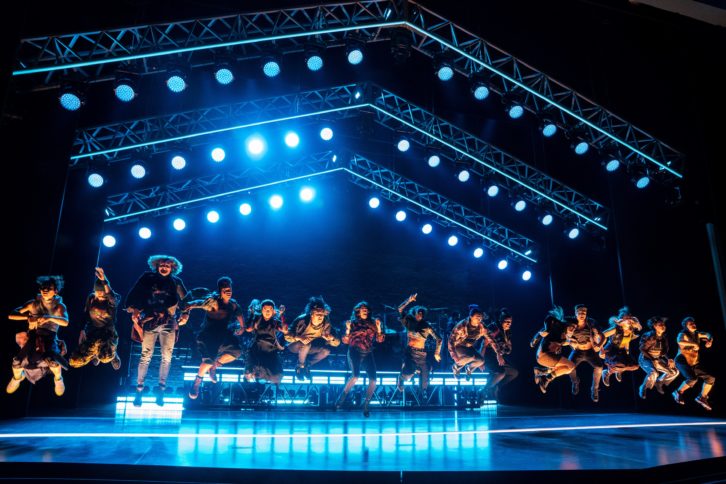
PHOTO: Evgenia Eliseeva
Following a five-year journey to Broadway, Jagged Little Pill opened on the Great White Way in December 2019 to acclaim. Pairing songs from Alanis Morissette’s 33 million-selling album of the same name with a book from Oscar-winning screenwriter Diablo Cody (Juno), the show was an instant hit, but like all of Broadway, had to shut down when the pandemic began in March 2020. More than 18 months later, it returned to the boards in October 2021, but ultimately had to shutter for good in December due to Covid-19 issues within its cast and crew.
During the seven months it played, however, across 36 previews and 171 performances, the show drew enthusiastic crowds and earned two Tony Awards, and was honored with 15 nominations, including a nod for Best Sound Design of a Musical, acknowledging sound designer Jonathan Deans.
For Deans and production mixer Mike Tracey, their main focus was to ensure the audio of Jagged Little Pill did justice to the efforts of the show’s composer/arranger/orchestrator. “Tom Kitt’s work is just breathtaking,” said Deans. “It’s like being enveloped in a sonic experience when you listen to what he’s done to the music, because you know what it is—you know the song, you’ve heard it before—and this version is so beautiful when it’s experienced sitting in a theater. It belongs to the production and it just happens to be Jagged Little Pill, the album from Alanis.”
Tracey agreed, noting, “We’re trying to capture the ethos of the album, but sonically, the show is totally its own thing. The show is not the album, because it’s not a singular person sharing her story, and it’s also not about Alanis at all; there is a completely different plot to the book.” Tracing a year in the life of a family coming apart at the seams, the musical uses songs from Jagged Little Pill along with a handful culled from other Morissette albums, but the familiar tunes are juxtaposed against a taut script.
“It’s a well-written play that goes into an Alanis Morissette song; you kind of can’t fathom that without having seen it, and then once you do, it works so well,” said Deans. “Do we do dynamic songs? I don’t really like the word ‘loud,’ because being loud is maybe cool for some reason, but unless it’s for a particular reason or you’re trying to create a feeling, an emotion or environment, there’s no point—but do we get there? Do we satisfy the audience who are looking for that ‘You Oughta Know’ moment? Yes. They jump to their feet usually at that song—and they do, depending on the night or many other moments, because they’re so in touch with the book, story, music and sonic experience. It’s a very unique production in that way.”
Achieving that was a goal right from the earliest meetings about the show between Deans, Kitt and director Diane Paulus back in 2014. All were in agreement that it had to sound familiar, but different than the typical Broadway jukebox musical, said Deans, adding, “Whether we call it soundscape, a sonic experience or immersive, we knew that we wanted it to be incredibly dynamic. We wanted a system that would be invisible.”
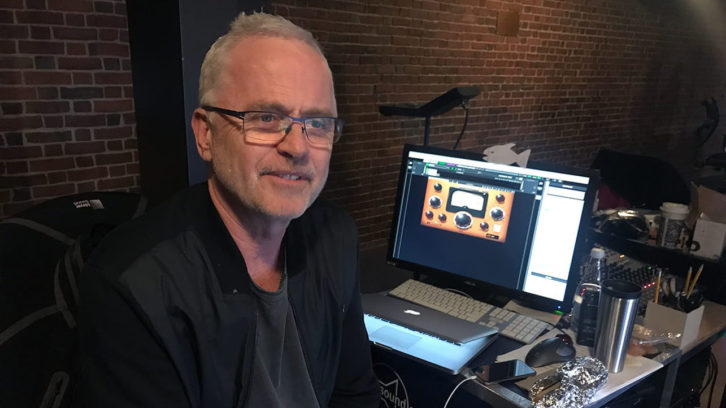
With that in mind, the audio system was put together with an eye toward invisibility—not only for the audience, but also the actors. “We put the musicians and performers on Shure’s Axient ADX1M transmitters,” said Deans. “I call it ‘the river rock’ because of the round corners of its shape, which means the performers can shove it anywhere on their body, it’s comfortable and they forget about it. The microphone is a DPA 4065—they put on their microphone and they’re aware of that, but the transmitter itself is gone in the wigs, the back of their neck or tucked in different pouches. Some of them are wearing two transmitters for backup, should one fail. The sonic experience that we get from the river rock is just brilliant; it feels more like a wired mic because of the transients, the dynamics, the space, the air and the actual reproduction of the transmission of the voice from transmitter to receiver. We tried the Shure system at the American Repertory Theatre Company in Cambridge, where we first did the production, and we never questioned that we would use it moving forward. It worked perfectly and did what it was supposed to do, which was to make us all sonically happy.”
Tracey mixed the show nightly on a DiGiCo SD7T console with two Waves SoundGrid Extreme servers. Also on-hand at FOH was a Meyer D-Mitri interfacing with the DiGiCo console for matrixing and output spatialization, and Meyer Galaxy speaker management. “The speaker system itself is almost all Meyer Sound speakers,” said Tracey. “The arrays are a combination of Linas and Leopards, and then for our dialog system and for the surround system, we have UP-4slims, and that’s most of the P.A.”
‘Jagged Little Pill’ Takes the Stage
Up onstage, roughly 30 d&b audiotechnik speakers were implemented into the floor as stage monitors for the cast during musical numbers, but during spoken dialog, an A/B system based around Meyer UP-4slims was put into use.
“We use the A/B system for the dialog,” said Deans. “If you have two people on stage talking with each other, we will send Actor A to the A part of the system and Actor B to the B part, so it’s an A/B system. If they were to go to the same speaker, even though they come in two separate inputs, there will be phase issues. It plays havoc with the phase of a microphone and then starts deteriorating the quality of the performance, so we assign people onstage to A or B, relative to who they interact with and so on. Once they start singing, for the majority of the songs—and some songs, we do a mixture of both—we move them out of the A/B system and put them into the music system, which is music and vocals.” IEMs were used in a few instances as well.
“We have a few band members who use the PSM 1000s,” said Tracey. “None of the actors are wearing in-ear monitors—it’s really tough to act with another person on stage with them in your ear—but three of our band members get off the band platform, and there’s a little live music moment in the show where you’re on the streets of New York and they’re busking, so we use in-ears for that moment.”
For the 19 months that Broadway was closed due to the pandemic, any live music in New York was a rare thing, all of which made bringing the show back to life even more important for all involved. “It was interesting,” said Tracey. “We’re still in the Broadhurst Theatre; moving never came up, so when we came back, we checked out the system, turned everything on, saw if anything had failed, and there was nothing of substance to report. It was as if we all hibernated or paused, so it wasn’t nearly as intense as getting the show on its feet for the first time. It was just cool to revisit it and get to do the show again.”
Deans concurred: “I’m in Orlando working on something else, and I just had to fly in for the reopening on October 21 because I wanted to have that rush, that injection of ‘this is what it was.’ It was one of the best experiences I’ve had in the theater, period. The pandemic has affected all of us in so many different ways, but once that first note hits, there is no pandemic, nothing else. You forget about everything else and you’re taken on a journey.”
